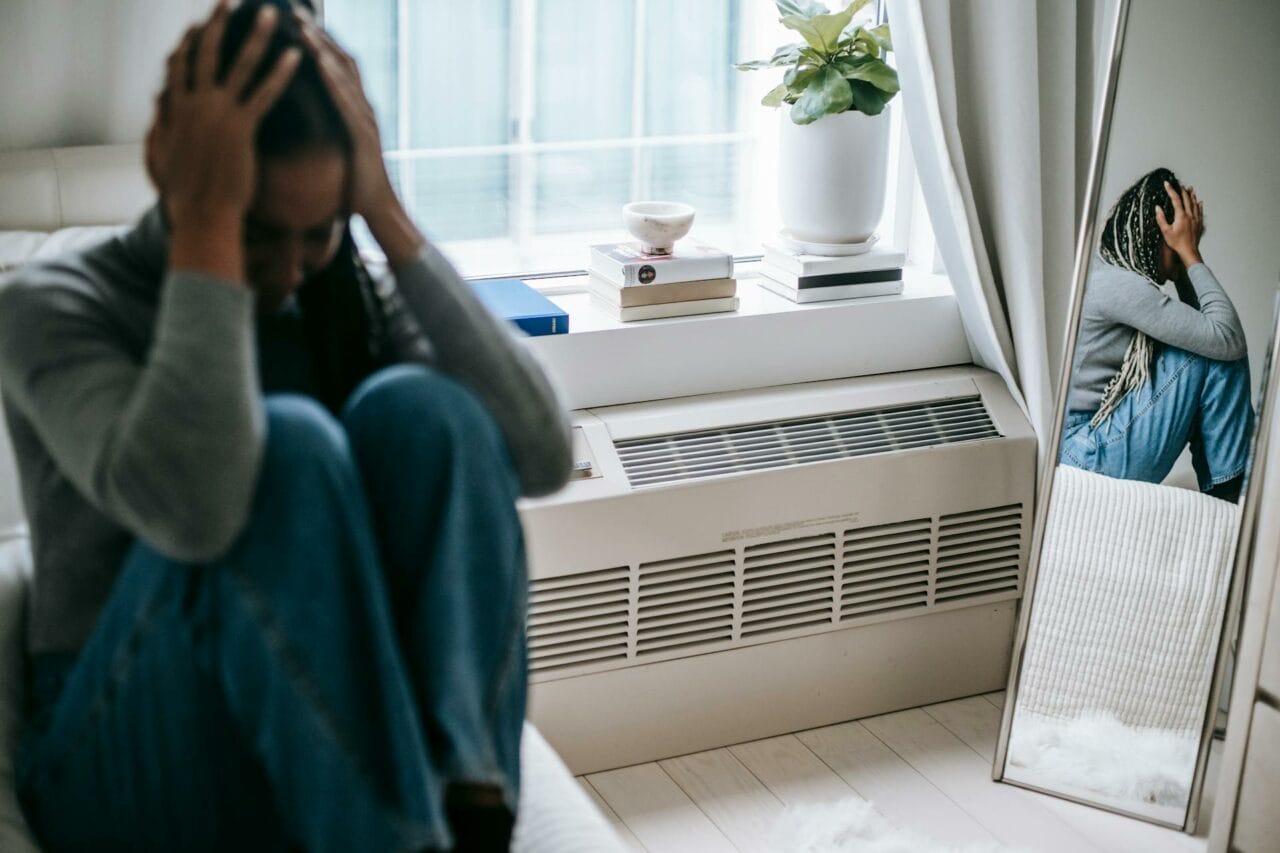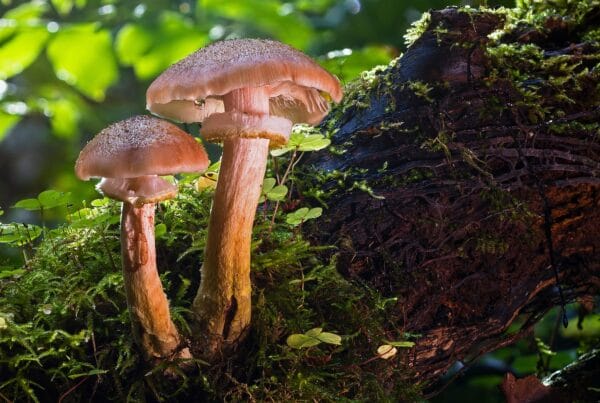Conventional anxiety treatment typically consists of medication and therapy. However, due to potential side effects, these methods may not be universally effective. This has led to a growing interest in alternative solutions such as psychedelic therapy, which employs substances like “magic mushrooms Montreal” and others.
Welcome to your premier platform to buy psychedelics online in Canada. Our services are quick, secure, and discreet.
[toc]Key Takeaways:
- Psychedelic therapy combines the therapeutic effects of psychedelic substances with traditional counselling to enhance the healing process.
- Psychedelic therapy can improve emotional health and overall quality of life through spiritual journeys.
- The integration process is a vital method in psychedelic therapy aimed at prolonging the effectiveness of the therapy session.

Anxiety Disorder Trend in Canada
The 2022 Mental Health and Access to Care Survey data reveals an alarming increase in the prevalence of anxiety disorders in Canada. The percentage of Canadians aged 15 and older diagnosed with generalized anxiety disorder in the year preceding the survey has risen from 2.6% in 2012 to 5.2% in 2022.
Contrasting Traditional Treatment and Psychedelic Therapy
Standard treatments for anxiety disorders usually involve a combination of psychotherapy and medication. Psychotherapy, also known as psychological counselling, is a collaborative process between a therapist and the patient designed to mitigate anxiety symptoms.
On the other hand, anxiety medications relieve symptoms by tailoring treatment to the specific type of anxiety disorder and considering any concurrent mental or physical health issues. Though treatments may differ based on individual situations, the primary strategies involve psychotherapy and medication.
In psychedelic therapy, sessions are unique as they include one or two doses of a psychedelic substance, in addition to other therapeutic techniques:
Exploring Psychedelic Therapy
Psychedelic therapy is a therapeutic technique that utilizes the advantages of psychedelic substances to enhance the recovery process. Noted for their hallucinogenic properties, these substances have been integral to holistic medicine and spiritual rituals in various cultures for millennia.
The two primary substances employed in this therapeutic approach are Lysergic acid diethylamide (LSD) and psilocybin. LSD triggers alterations in mood, perception, and consciousness. Psilocybin, as noted on the Health Canada website, is the active ingredient in magic mushrooms. Consumption of these mushrooms can provoke sensory experiences, such as visual, auditory, or tactile hallucinations.
Dosage Strategy for Multiple Sessions
In psychedelic therapy, professionals assess patients to determine the appropriate dosage of psilocybin for their treatment. The dosage differs among individuals, with some beginning at moderate levels while others can withstand larger amounts. The treatment process usually consists of one to three medication sessions, each extending six to eight hours and spaced out over several weeks. This method is distinct from traditional medications that require daily intake until a healthcare provider advises otherwise.
Experiencing Spiritual and Transformational Impact
Unlike conventional anxiety medications, which only manage symptoms, psychedelic therapy seeks to address the root causes of the condition, often resulting in transformative visions or feelings of divine interaction. The therapy can significantly affect emotional health and overall life quality.
The immersive experiences can facilitate profound realizations, heightened self-awareness, and enhanced emotional processing. These outcomes can stimulate personal development, inspire positive behavior modifications, and improve overall mental health.
Outcomes
| Expanded Consciousness | Altered states of consciousness provide a new viewpoint of the world. | The heightened awareness typically results in:Deep insightsEpiphaniesEnhanced comprehension of oneself and one’s surroundings |
| Emotional Healing | Facilitates emotional recovery by offering an opportunity to face and process unresolved trauma, grief, or emotional discomfort. | This process assists in:Accessing buried emotionsReleasing emotional blockagesPromoting emotional well-being |
| Increased Self-Awareness | Enhances connectivity among sensory brain regions while reducing connectivity within the default mode network. This network integrates brain areas that are interconnected, which handle egocentric thinking and a person’s subjective perception of themselves.” | These regions are tasked with: Modifying negative thought cycles, beliefs, and routine behaviors. Empowering users to gain profound insights into their authentic selves, motivations, and interpersonal communications. |
Somatic Therapy
Somatic therapy, although not commonly linked with psychedelic therapy, is becoming recognized for its potential benefits. This body-centric technique explores the connection between the mind and body. It’s based on the idea that past traumas may cause sensations to become trapped in the body. Somatic therapists help individuals identify these bodily sensations and utilize therapeutic methods to alleviate this stress.
Integration
This provides a framework for clients to attain clarity, acquire perspective, and cultivate wisdom from their psychedelic experiences. The transformative process occurs during integration sessions with the therapist and the client’s proactive efforts outside of psychedelic explorations. Integration enhances the transformative effects of psychedelics by actively engaging with surfaced insights and emotional discoveries.
Types of Integration
- Journaling. Writing down experiences can help individuals solidify memories for easier future reference. It also allows clients to examine their experiences from various perspectives to reveal different interpretations, meanings, and connections.
- Art. This provides an efficient way to encapsulate the complex emotions and feelings of a psychedelic journey in a creative and visually expressive medium.
- Practicing Nature-based Approaches. These can be as simple as taking mindful walks in the woods or finding peace beside a tranquil body of water. Therapists can help clients recognize intricate patterns in nature or suggest using natural elements like plants, stones, water, and candles as grounding tools.
- Participating in Integration Groups. Group sessions with individuals sharing similar experiences offer a significant opportunity for reflection, support, and connection. The capacity of psychedelic therapy to foster a sense of interdependence and mutual understanding beyond individual boundaries is fundamental.
The Role of These Techniques in Treating Anxiety
The underlying pharmacological principle for all psychedelics is their ability to act as agonists, or stimulators, of serotonin (5-HT) 2A receptor. Psychedelic research primarily studies their influence on the brain’s default mode network, a network closely associated with repetitive thoughts and linked to conditions such as depression and anxiety disorders. Treatment can significantly reduce anxiety levels, with effects lasting up to 12 months after treatment.
After a psilocybin session, which often includes intense spiritual experiences, the patient participates in a conversation with their therapist. In these therapeutic discussions, trained healthcare professionals aim to listen carefully to the patient and employ specific procedures and techniques to enhance the positive outcomes of the treatment.
All these methods work together to assist those suffering from anxiety in achieving enduring relief in fewer sessions compared to traditional treatments.
Transform Your World, One Session at a Time
While many people rely on traditional treatments for anxiety, they are not effective or satisfying for everyone. Psychedelic therapy offers a different approach, using unique methods that can trigger transformative experiences. These techniques work together to produce deep, lasting results—sometimes for up to a year after just one to three sessions.
Not only does this therapy improve mental health, but it could also offer considerable cost savings for patients. Ready to explore a new path to wellness? Discover the potential of psychedelic therapy with Buy Magic Mushrooms Canada.
Frequently Asked Questions
Is there a specific type of magic mushroom used for psychedelic therapy?
In psychedelic-assisted therapy research, it’s often overlooked to specify the type of mushroom used. Psilocybe cubensis is typically the preferred choice.
Online magic mushroom dispensaries offer diverse strains to suit various preferences. You have the freedom to choose any strain to experience the therapeutic benefits of psychedelics. However, it’s crucial to exercise caution and choose a reliable vendor to avoid obtaining unsafe magic mushrooms from dishonest sources.
How long does psychedelic therapy last?
Psychedelic therapy involves several stages and its length can differ. A single session where the psychedelic is taken lasts between 4 to 8 hours. The entire therapy process, including preparation, the session, and follow-up discussions, can span from a few weeks to several months.
As for lasting effects, individuals often report improvements in their mental health for several months or even up to a The benefits of these sessions can be seen within a year or even after just a few sessions.
Several sessions are incorporated.
Does the therapist guide the patient on their spiritual journey?
During this stage, professionals such as therapists or other staff may accompany the patient. Studies show that Spiritual Health Practitioners (SHPs) offer unique and valuable insights to improve participants’ wellbeing and support their progress on a spiritual journey. Some people choose to engage an SHP, while others rely on the therapist or specialist available.
Does the “set and setting” factor into the process of psychedelic therapy?
Yes, both the mental state (set) of the individual and the physical environment (setting) are vital in safely guiding spiritual experiences during a psychedelic therapy session. The individual’s mindset influences their spiritual journey, affecting the experience both before and during the psychedelic session. Factors such as beliefs, expectations, emotional states, and intentions determine the direction and intensity of the experience.
Primary Reference: Psychedelics as Emerging Treatments for Anxiety Disorders: Opportunities and Challenges in a Budding Field – PMC (nih.gov)
About the Authors:
Franklin King, IV, MD. and Rebecca Hammond, M.D.
Related Articles:





